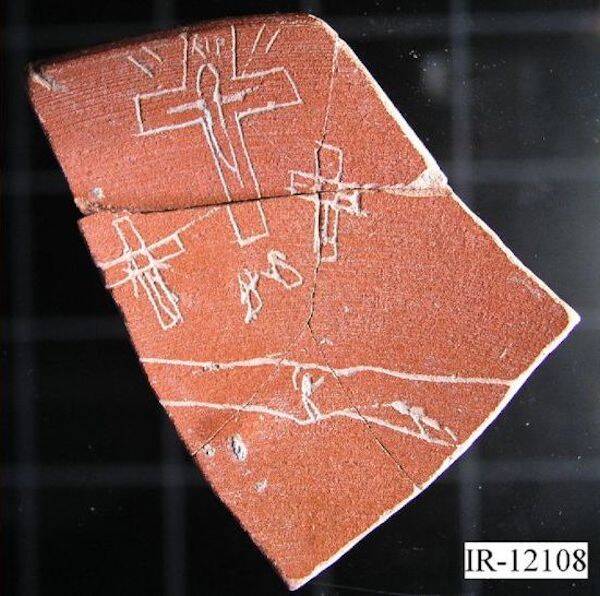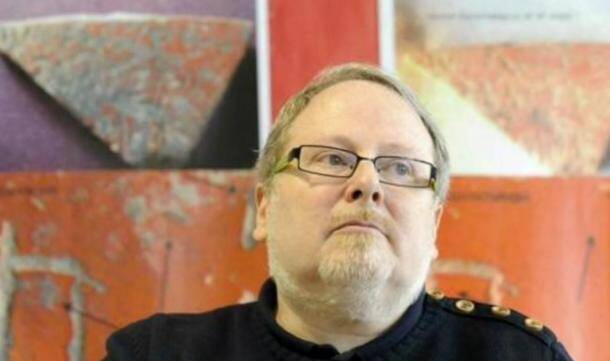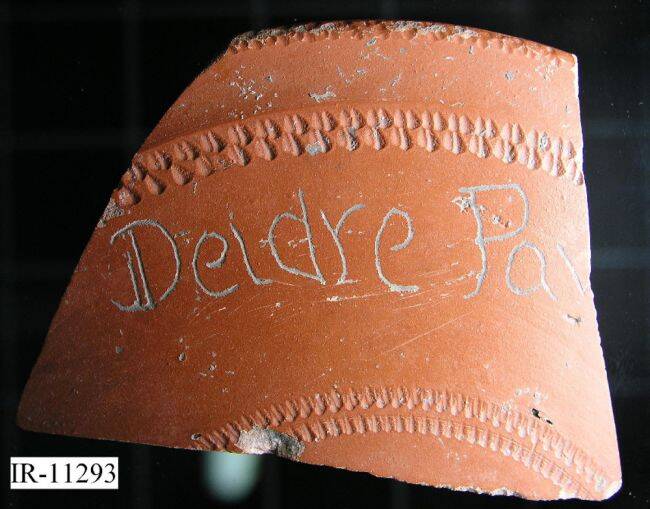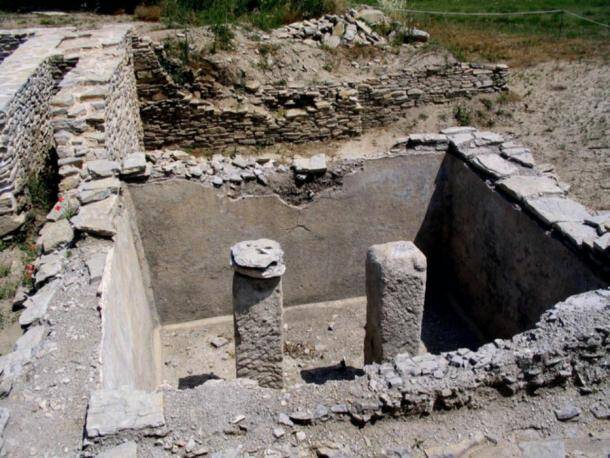Three Spanish archaeologists face serious prison time after a government-sponsored commission found that at least 476 artifacts they "discovered" were "manipulated or outright fakes."

ZephyrusExperts found that the crucifixion was created “hundreds of years later than claimed.”
When archaeologist Eliseo Gil presented artifacts from the third century A.D. in 2006, the academic world was stunned. Not only did the ancient graffiti on pottery shards he unveiled contain one of the oldest examples of the written Basque language, but the oldest ever depiction of Christ’s crucifixion as well.
Unfortunately, those remarkable finds — which Gil claimed “rewrote the history books” — have now been declared criminal forgeries. The disgraced researcher now faces prison time for falsifying these relics, which he purportedly unearthed at a Roman settlement in Spain.
Two former colleagues of Gil’s are also accused, according to Live Science. All three insist that the writing on the pottery, glass, and bricks they found are authentic, even as their trials in a Vitoria-Gasteiz criminal court began on Monday.
The artifacts excited the whole archaeology community due to the connection they made between early Roman Christianity, Ancient Egyptian, and Basque cultures. It was only after the artifacts’ anachronistic Latin grammar and other similar errors were pointed out that many academics began to suspect that the artifacts had actually been falsified.

YouTubeEliseo Gil faces five-and-a-half years in prison. If found guilty, he will be disqualified from working on archaeological sites in the future.
While one might think the consequences for falsifying a historical artifact would be little more than career suicide for an archaeologist, Gil, geologist Óscar Escribano, and materials analyst Rubén Cerdán are in real legal jeopardy. A scientific commission of the provincial government where the artifacts were purportedly discovered alleges that the three had falsified, misrepresented, or outright fabricated at least 476 artifacts beginning as early as 2008.
The three experts had “perpetrated an elaborate fraud,” the commission’s report concluded. It was at that point that the government prohibited the researchers from continuing their excavations at Iruña-Veleia and charged them with criminal fraud and “damaging heritage items.”
The alleged fraud began to unravel in 2017 when Rodríguez Temiño, of Andalucia’s provincial government, published a study in the archaeological journal Zephyrus that detailed the alleged falsifications made by Gil and his colleagues. With the trial now in motion, the major points regarding that claim will be heard in court.
One of the most damning pieces of evidence against the archaeologists is the name of the Egyptian queen Nefertiti scrawled onto one of the artifacts. The hieroglyphics are certainly accurate, but there is one major problem: nobody knew the name of the famous Egyptian queen until her tomb was discovered in the 20th century.
Another piece of pottery had a Latin motto inscribed on it which wasn’t even created until 1913 during international court proceedings at The Hague.

ZephyrusBoth uppercase and lowercase letters were used on this fragment. That practice wasn’t implemented until after the eighth century.
“At first, I was very surprised,” said Basque Country University professor of Indo-European languages Joaquin Gorrochategui. “The Basque inscriptions were 600 years older than any others, so that was startling, but I didn’t immediately think they were false.”
Gorrochategui recalled a presentation of Gil’s that claimed the pottery fragments were from a Roman schoolroom. The teacher, Gil argued, was from the Eastern Mediterranean and taught his pupils about Ancient Egypt and other regions. There were simply too many errors for Gorrochategui to accept.
“The Latin was so vulgar; I could not believe my eyes as the slides were projected onto the screen,” he said.
The name “Eneas,” for instance, was written instead of “Aenae.” A modern comma was inscribed on a fragment, as well. Gorrochategui felt a responsibility to share his misgivings about the more than 400 artifacts Gil had unearthed with the director of Vitoria’s archaeological museum.
This led to an inquisitive commission with experts from various fields being established to settle the matter. That commission concluded that Gil had been purposely faking his extraordinary findings.

ZephyrusThe use of modern commas here is completely anachronistic, and adds to the suspicion of forgery.
Gil and Escribano are now facing five and a half years in prison each, while Cerdán faces two and a half. The prosecutor’s office is seeking more than $313,000 in damages and asking for all three defendants to be disqualified from working on archaeological sites in the future.
Some archaeologists agree that the artifacts are fake, but aren’t entirely sure whether Gil and his colleagues are responsible.
“If they’re convicted, it’s going to be an absolute travesty of justice,” said Dr. Edward Harris, whose Harris Matrix has become the gold standard of measuring stratigraphic sequences on dig sites. “I’d say they did a superb job of excavating. It’s beyond the realms of reality to think such things could be
manufactured and put into this dig.”

FlickrThe artifacts were purportedly unearthed at the Iruña-Veleia excavation site and Roman settlement in Spain.
Others are less trusting. The use of both uppercase and lowercase letters, for example, wasn’t standardized until after the eighth century.
The fact that experts assessed the crucifixion to have been created “hundreds of years later than claimed” doesn’t sit well, either. Gil, meanwhile, called his predicament during the last press conference in 2015 “a torture.” He has since refused to comment on the matter.
Hopefully, the criminal trial will settle once and for all whether Gil and his colleagues knowingly committed the alleged fraud, but as it stands, the artifacts certainly seem to be telling a different story than the defendants.
After reading about the archaeologists facing prison for allegedly forging the earliest portrayal of Jesus’ crucifixion, learn about Anatoly Fomenko’s New Chronology that claims history is all a “fake.” Then, read up on Jesus’ real name.





